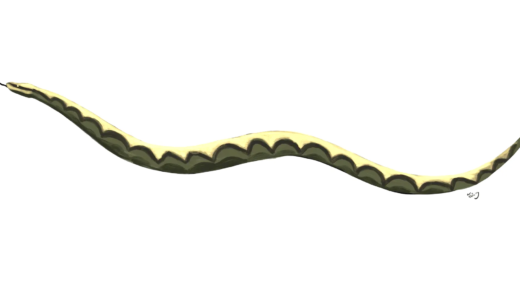The Arctic Circle is a critical area for climate research, serving as a barometer for global climate change. Historical exploration has revealed much about its geography and ecosystems, with notable figures like Fridtjof Nansen and Roald Amundsen contributing to our understanding. Fun facts highlight the uniqueness of this region, from the midnight sun to its diverse wildlife.
Where is the Arctic Circle? Understanding its Location
The Arctic Circle is a significant geographical boundary located at approximately 66.5 degrees North latitude. This imaginary line encircles the Earth, marking the area where the sun does not set for at least one day during the summer solstice and does not rise for at least one day during the winter solstice. The Arctic Circle passes through several countries, including Norway, Sweden, Finland, Russia, the United States (Alaska), Canada, Greenland, and Iceland.
To visualize its location, you can imagine a circle wrapping around the top of the globe. This region is characterized by its cold climate, vast tundras, and unique wildlife. Understanding the geographical location of the Arctic Circle is crucial for grasping the unique climatic conditions and ecosystems that thrive in this part of the world.
Climate Characteristics of the Arctic Circle
The climate in the Arctic Circle is defined by its extreme cold and long winters. Temperatures can plummet to below -30 degrees Celsius (-22 degrees Fahrenheit) in the winter. The summers, on the other hand, can be surprisingly mild, with temperatures hovering around 0 to 10 degrees Celsius (32 to 50 degrees Fahrenheit) in some areas. This distinct climate is influenced by various factors, including ocean currents and the polar night phenomenon.
Interestingly, the Arctic Circle experiences a unique weather pattern known as the polar climate. This results in minimal precipitation, mostly in the form of snow, and an environment that supports a limited range of flora and fauna. The unique climate conditions also contribute to the formation of permafrost, which plays a crucial role in the region’s ecosystem.
Sunlight Behavior in the Arctic
Sunlight in the Arctic Circle behaves in fascinating ways that are unlike any other part of the world. During the summer months, the sun never sets, leading to a phenomenon called the “midnight sun.” This means that for several weeks, the sun remains visible at midnight, providing continuous daylight. Conversely, in the winter, the Arctic experiences prolonged darkness, known as the “polar night,” where the sun does not rise above the horizon for an extended period.
This unusual sunlight behavior significantly impacts life in the Arctic. For example, the long hours of sunlight during summer allow plants to photosynthesize and grow quickly, while the dark winter months can lead to challenges for wildlife and human inhabitants. Understanding these patterns is essential for studying the ecology and human adaptation in the Arctic Circle.
Wildlife in the Arctic Circle
Wildlife in the Arctic Circle is as unique as the environment itself. The extreme cold and harsh conditions have led to fascinating adaptations among the creatures that thrive here. Notable species include:
- Polar Bears: The iconic symbol of the Arctic, these large carnivores have thick fur and a layer of fat to insulate against the cold. They are excellent swimmers, using their powerful limbs to navigate icy waters.
- Arctic Foxes: With their white fur in winter and brown summer coats, Arctic foxes are masters of camouflage. They have furry paws that act like snowshoes to keep them from sinking into the snow.
- Walruses: Known for their long tusks, walruses are social animals that often gather in large groups on ice floes. They rely on blubber for insulation and can dive deep to forage for clams.
- Seals: Various seal species, including ringed and bearded seals, inhabit the Arctic. Their thick blubber and streamlined bodies help them survive in frigid waters.
- Birds: The Arctic Circle is home to migratory birds like the puffin and snow goose, which come to breed during the summer months when food is abundant.
These animals have evolved to cope with the extreme conditions of the Arctic Circle, showcasing nature’s resilience. Their adaptations not only enable survival but also play a crucial role in the Arctic ecosystem.
How People Live in Extreme Conditions
Human life in the Arctic Circle is a testament to adaptability and resilience. In such extreme conditions, communities have developed unique ways to thrive. Key aspects of living in this harsh environment include:
- Warm Clothing: While it may seem obvious, the clothing worn by Arctic inhabitants is specially designed. Materials like fur and modern synthetic fabrics provide insulation and waterproofing.
- Housing: Traditional igloos and modern insulated homes are built to retain heat. They often feature thick walls and minimal windows to reduce heat loss.
- Food Sources: Many Arctic communities rely on hunting and fishing for sustenance. Traditional practices include hunting seals, whales, and caribou, which provide essential nutrients.
- Community and Culture: The harsh environment fosters a strong sense of community. Collaborative efforts in hunting and sharing resources are vital for survival.
Living in the Arctic Circle is not just about enduring the cold; it’s about thriving through innovation, tradition, and cooperation. This unique lifestyle highlights the incredible human capacity to adapt and overcome challenges.
Geographical Features of the Arctic Circle
The geographical features of the Arctic Circle are both stunning and diverse. This region encompasses a variety of landscapes that shape its ecosystem. Key features include:
- Glaciers: These massive ice formations are prevalent in the Arctic, slowly moving and shaping the landscape as they melt and reform.
- Tundra: Characterized by low temperatures and short growing seasons, tundra regions support hardy plants like mosses and lichens, which are adapted to the cold.
- Ice Caps: Thick ice covers vast areas, creating unique habitats for wildlife and affecting global sea levels as they melt.
- Mountain Ranges: The Arctic Circle features several mountain ranges, with rugged terrain that influences weather patterns and habitats.
- Coastal Areas: The coastline is dotted with fjords and bays, providing rich feeding grounds for marine life and serving as crucial habitats for many species.
These geographical features are not just beautiful; they play a significant role in the climate and ecology of the Arctic Circle, making it a vital area for environmental research.
Importance of the Arctic Circle for Climate Research
The Arctic Circle plays a pivotal role in climate research due to its sensitive environment. This region is a barometer for global climate change, with its melting ice caps serving as indicators of rising temperatures. Scientists focus on the Arctic Circle to understand:
- Climate Change Indicators: The rapid melting of glaciers and permafrost in the Arctic is a direct result of climate change, providing crucial data for global warming studies.
- Unique Ecosystems: The Arctic Circle hosts unique ecosystems that are highly sensitive to temperature changes, making it an ideal location for studying ecological responses to climate variations.
- Global Weather Patterns: Changes in the Arctic can influence weather patterns worldwide, affecting everything from precipitation to storm tracks in more temperate regions.
- Carbon Storage: The Arctic’s permafrost stores vast amounts of carbon. Understanding how thawing permafrost releases greenhouse gases is essential for predicting future climate scenarios.
Thus, the Arctic Circle is not just a remote region; it is a critical area for climate research, helping scientists gain insights into the broader implications of climate change on our planet.
Historical Exploration of the Arctic Circle
The Arctic Circle has fascinated explorers for centuries. Its harsh conditions and mysterious landscapes have drawn adventurers seeking to uncover its secrets. Notable explorations include:
- Fridtjof Nansen: The Norwegian explorer’s 1893 expedition on the Fram was groundbreaking, as it drifted across the Arctic Ocean, providing valuable data on polar currents and ice movements.
- Robert Peary: Often credited with reaching the North Pole in 1909, Peary’s expeditions helped map the Arctic region, though his claims have been debated.
- Roald Amundsen: The first person to reach both the South and North Poles, Amundsen’s journeys in the early 20th century expanded our understanding of Arctic geography and conditions.
- Modern Scientific Expeditions: Today, researchers continue to explore the Arctic Circle using advanced technology, from icebreakers to drones, contributing to our understanding of climate change and marine ecosystems.
These explorations have not only filled maps but also provided critical knowledge about the Arctic’s environment and its global significance.
Fun Facts about the Arctic Circle
The Arctic Circle is full of surprising facts that capture the imagination. Here are a few fun tidbits:
- Midnight Sun: In summer, some places within the Arctic Circle experience 24 hours of sunlight!
- Polar Night: Conversely, during winter, certain areas can go weeks without sunlight, creating a unique, dark environment.
- Home to the World’s Largest Land Carnivore: The polar bear, which can weigh over 1,500 pounds, is the Arctic’s apex predator.
- Unique Flora: Despite the harsh conditions, over 1,700 species of plants can be found in the Arctic, adapted to survive the cold.
- Cultural Diversity: Many indigenous peoples, including the Inuit and Sámi, have lived in the Arctic for thousands of years, adapting their cultures to the extreme climate.
These fun facts reveal the Arctic Circle’s unique characteristics and the incredible life that thrives in such an extreme environment.





Comments are closed.